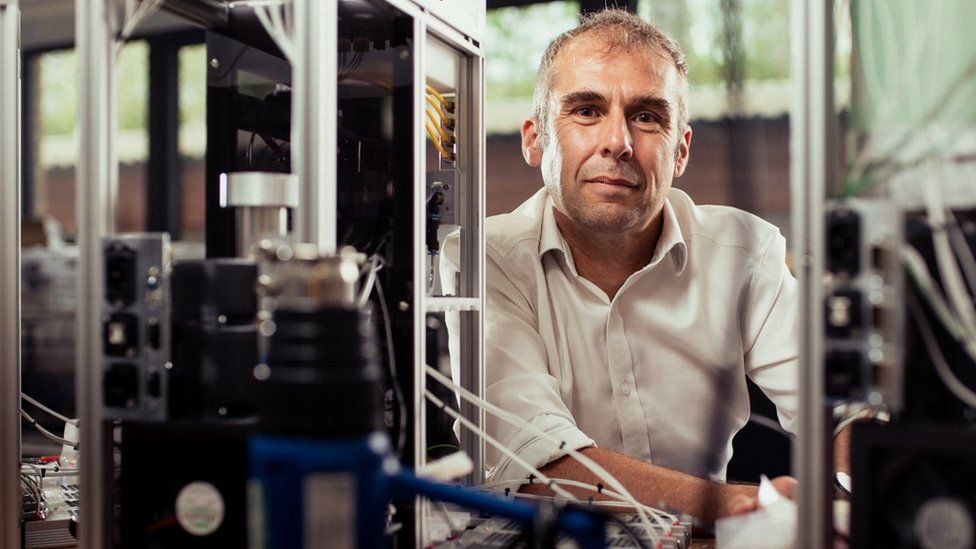Is the UK doing enough to monitor air pollution?
Is the UK doing enough to monitor air pollution? BBC.com


Ella Adoo-Kissi-Debrah: The Impact of Air Pollution on Health

By Matt Wall
Tech reporter
Introduction
Ella Adoo-Kissi-Debrah was just nine-years-old when she suffered a fatal asthma attack on 15 February 2013.
Air Pollution as a Contributing Cause of Death
Fast forward to 2020, and she became the first person in the UK to have air pollution listed as a contributing cause of their death.
Campaign for a Second Inquest
Ella’s mother Rosamund had long campaigned for a second inquest after becoming convinced that pollution from heavy traffic near where they lived in Lewisham, south-east London, was a factor.
Confirmation of Suspicions
The new inquest confirmed Rosamund’s suspicions, finding that nitrogen dioxide (NO2) emissions had exceeded both EU and UK levels. It also concluded that quantities of dangerous particulate matter in the air (PM2.5 and PM10) had been above World Health Organization (WHO) guidelines.
Significance of Air Pollution
The Deputy Coroner Philip Barlow concluded that “air pollution was a significant contributory factor to both the induction and exacerbations of her asthma”, and that “delay in reducing the levels of atmospheric air pollution is the cause of avoidable deaths”. He also cited a shortage of air quality monitors as a reason why there was still much public ignorance about this invisible killer.
Improvements in Air Pollution Monitoring
The Department for Environment, Food and Rural Affairs (Defra) says it now has 555 sites across the UK that monitor air pollution, up from 424 in 2020.

Monitoring Dangerous Pollutants
These monitoring sites measure some or all of the most dangerous pollutants, such as NO2, sulphur dioxide (SO2), ozone (O3), carbon monoxide (CO), nitric oxide (NO), and PM2.5 and PM10.
Importance of Accurate Data
Artificial intelligence software systems are increasingly helping to analyze all the data sets available, creating more accurate models that strip out the impact of wind, temperature, and sunlight on pollution readings. This is crucial for policymakers to determine effective interventions.

Call for Behavioral Change
Rosamund Adoo-Kissi-Debrah believes that while emissions have been falling and technology has been improving, a change in human behavior is necessary to make a real difference. This includes driving less and over shorter distances, but to do this, affordable, safe, and reliable public transport is needed as an alternative.

Related Topics
SDGs, Targets, and Indicators
1. Which SDGs are addressed or connected to the issues highlighted in the article?
- SDG 3: Good Health and Well-being
- SDG 11: Sustainable Cities and Communities
- SDG 13: Climate Action
2. What specific targets under those SDGs can be identified based on the article’s content?
- SDG 3.9: By 2030, substantially reduce the number of deaths and illnesses from hazardous chemicals and air, water, and soil pollution and contamination.
- SDG 11.6: By 2030, reduce the adverse per capita environmental impact of cities, including by paying special attention to air quality and municipal and other waste management.
- SDG 13.1: Strengthen resilience and adaptive capacity to climate-related hazards and natural disasters in all countries.
3. Are there any indicators mentioned or implied in the article that can be used to measure progress towards the identified targets?
- Number of air quality monitoring sites
- Levels of nitrogen dioxide (NO2) emissions
- Quantities of particulate matter (PM2.5 and PM10) in the air
- Availability and accessibility of air quality data
Table: SDGs, Targets, and Indicators
| SDGs | Targets | Indicators |
|---|---|---|
| SDG 3: Good Health and Well-being | SDG 3.9: By 2030, substantially reduce the number of deaths and illnesses from hazardous chemicals and air, water, and soil pollution and contamination. | – Levels of nitrogen dioxide (NO2) emissions – Quantities of particulate matter (PM2.5 and PM10) in the air |
| SDG 11: Sustainable Cities and Communities | SDG 11.6: By 2030, reduce the adverse per capita environmental impact of cities, including by paying special attention to air quality and municipal and other waste management. | – Number of air quality monitoring sites – Availability and accessibility of air quality data |
| SDG 13: Climate Action | SDG 13.1: Strengthen resilience and adaptive capacity to climate-related hazards and natural disasters in all countries. | – Levels of nitrogen dioxide (NO2) emissions – Quantities of particulate matter (PM2.5 and PM10) in the air |
Behold! This splendid article springs forth from the wellspring of knowledge, shaped by a wondrous proprietary AI technology that delved into a vast ocean of data, illuminating the path towards the Sustainable Development Goals. Remember that all rights are reserved by SDG Investors LLC, empowering us to champion progress together.
Source: bbc.com

Join us, as fellow seekers of change, on a transformative journey at https://sdgtalks.ai/welcome, where you can become a member and actively contribute to shaping a brighter future.







